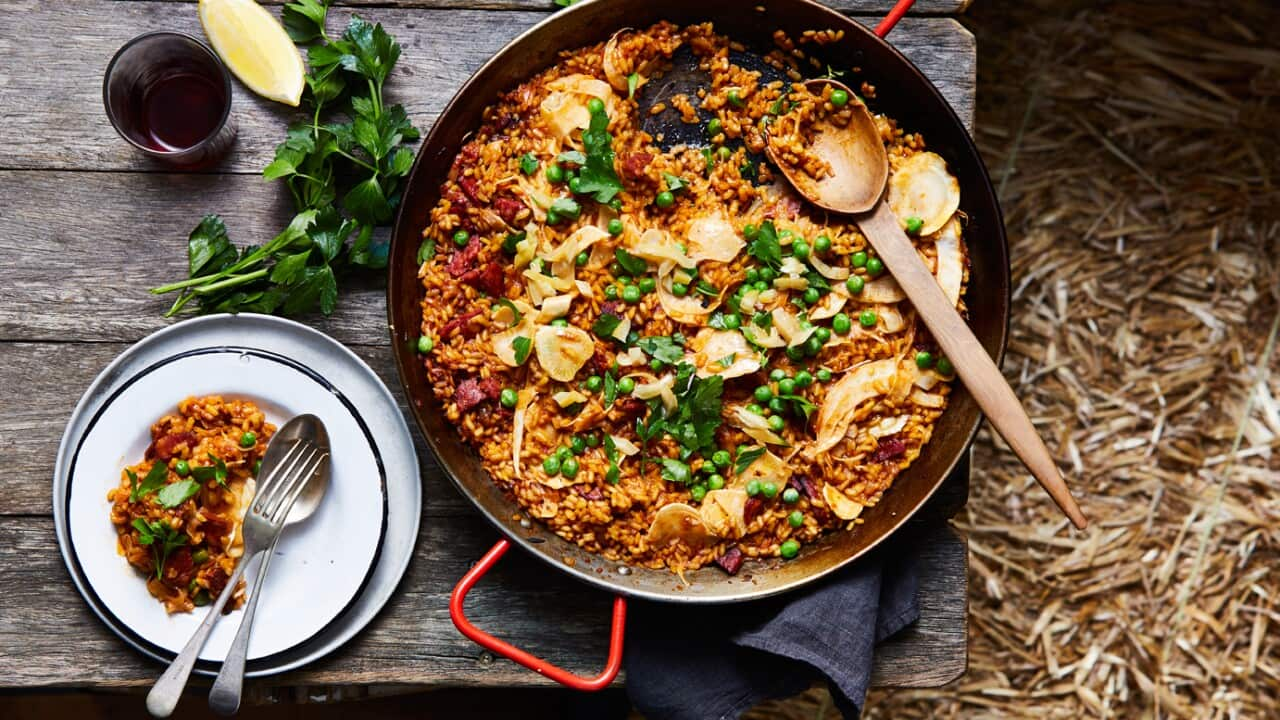Rice was first introduced to Spain and, ever since, the grains have been ingrained in Spain’s culinary identity.
Most of us have tried – or at least what many think is paella. But the question is: what makes a truly authentic version and what is actually a paella pretender?
and don’t even think about chorizo unless you want to incur the wrath of the Spanish nation ().
Paella pride is particularly prominent in Valencia, the city on Spain’s Mediterranean east coast that is the dish’s . There, the authentic recipe for (Valencian paella), focuses on ingredients that were readily available to farmers taking lunch breaks in the rice fields surrounding the city – including . Socarrat, or , the crunchy grains at the bottom of the pan, is considered the tastiest bite.
Anything else – from seafood and lamb to peas and sausage – is “rice with …” whatever. It isn’t paella.
Tourists are outed by eating plates of soggy rice for dinner, when every Valencian knows it’s a shared lunchtime dish best eaten with a wooden spoon (or paella, as the pan is somewhat confusingly called).
Rice with pink, plump prawns isn’t paella. Adding mussels is a sin and don’t even think about chorizo unless you want to incur the wrath of the Spanish nation (just ask Jamie Oliver).
Ask any Valencian whose paella is best and their answer is likely to be mum, or dad – like the Aussie barbecue, the family patriarch often takes charge of the Sunday paella.
After a more official result? Valencia has held the annual (International Paella Contest) to decide who makes the world’s best version. joined chefs from Japan, the United States and Costa Rica this year in daring to take on Spain’s most iconic dish.
The , the majority of them from Spain, must cook with the same ingredients in the traditional way over a wood fire. Earlier this month, and caterer took out the award for for the second time.
“The flavour and socarrat are the most important elements. It is all about the way you cook the rice,” says Simply Spanish’s He competed in the contest.
Lattarulo, whose family came to Australia when he was a child, was inspired by a trip to Europe to bring truly authentic Spanish dishes to Australian diners.
He has been making different types of “paella” for 20 years but had “a bit of a battle” convincing customers paella should be dry, not wet “like a risotto”.
The Simply Spanish team cooks at South Melbourne and Queen Victoria markets and Lattarulo remembers weekly complaints from the same customer about “burnt” grains at the base of the pan.
“Then there was a TV program where a celebrity chef explained a paella should have socarrat. The next week, [the customer] came past and told me I didn’t have enough socarrat,” he says.
Now Lattarulo caters for events where 1500 plates of paella are snapped up in a few hours. Though Simply Spanish has on its menu, its “adapted” versions featuring are more popular.
“I don’t think I need to shove it in everyone’s face what a real paella is, but it is important to realise not every rice dish you eat is paella,” Lattarulo says.
“It’s about the integrity of the dish. It is showing people ‘this is the Valencian paella’.”
I don’t think I need to shove it in everyone’s face what a real paella is, but it is important to realise not every rice dish you eat is paella.
To celebrate its world-famous dish, Valencia declared 20 September as . Coinciding with the traditional month of the rice harvest, it was an opportunity to emphasise .
In a sign Valencians may be softening their stance (if not their rice), a encouraged international cooks to share their own versions of “paella”.
“For one day, rice with extras is also paella. For one day only, we will look at peas as though they were socarrat. This day we put our differences aside, instead of rejecting the chorizo,” Valencians say in the video.
“But just for one day, OK?”
Have we got your attention and your tastebuds? airs every weeknight at 6pm on SBS followed by an encore screening at 9.30pm on SBS Food Network. Episodes will be available after broadcast via . Join the conversation #TheChefsLine on Instagram , Facebook and Twitter . Check out for episode guides, cuisine lowdowns, recipes and more!







